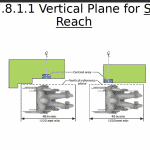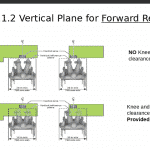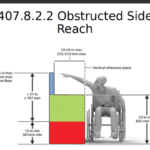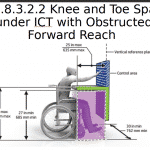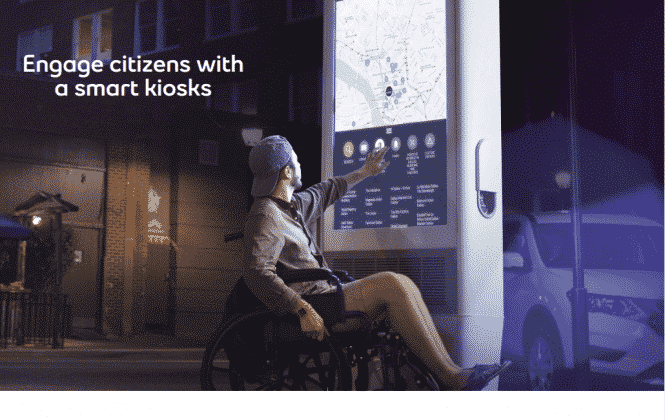
DOJ Releases Standards for Review
Editor Note: Self-service kiosks and digital signage/interactive displays such as wayfinding for example and smart city are both considered “closed systems”. Websites are considered open systems. Mobile applications are new and the proposed regulations there are likely to have the most impact
The Department of Justice (Department) is publishing a Notice of Proposed Rulemaking (NPRM) explaining how we propose updating the regulations for Title II of the Americans with Disabilities Act (ADA) to add more specific requirements about web and mobile application (app) accessibility.
This NPRM proposes a specific technical standard that state and local governments would have to follow to meet their existing obligations under Title II of the ADA for web and mobile app accessibility. The NPRM asks the public for comments about this proposal.
Summary In Brief
- What is Title II? — Under Title II of the ADA, state and local governments’ services, programs, and activities must be accessible to people with disabilities. In Title II, state and local governments are also called public entities. Title II applies to all programs, services, or activities of state and local governments, from adoption services to zoning regulation. This includes the services, programs, and activities that state and local governments offer online and through mobile apps.WCAG 2.1 Level AA is the adopted standard
- An NPRM is a stage in the rulemaking process that happens before an agency adopts a final regulation. It is like a first draft of a regulation. It lets the public know what the agency is considering and provides an opportunity for feedback.
- An NPRM is not a final regulation. So, this proposal is not an enforceable rule right now. This NPRM has been published so that the public can provide us with feedback on our proposal for the rule before we adopt a final rule.
- Two to Three years to meet standard depending on size (greater than 50,000 has two years)
- How and When to Respond — We Want Your Feedback
The fact sheet gives a high-level summary of the NPRM. For more details about our proposal, you should read the NPRM. The NPRM is also published in the Federal Register. We have also published an analysis of the costs and benefits of the proposed rule. This is called a Preliminary Regulatory Impact Analysis (PRIA). You can read the PRIA on ADA.gov. After you’ve reviewed the NPRM, we’d like to hear your feedback. Have we made the right proposals about when and how web content and mobile apps should be made accessible? Do the proposed exceptions and the proposed limits on when those exceptions apply make sense? Should we change anything about the proposed rule? Why? You can submit comments before October 3, 2023 by going to Regulations.gov. You can also mail us your comments at Disability Rights Section, Civil Rights Division, U.S. Department of Justice, P.O. Box 440528, Somerville, MA 02144.
If you need information in an alternative format, you can call the ADA Information Line at (800) 514-0301 (voice) or 1-833-610-1264 (TTY). - Here is a 2023 NPRM web-accessibility-NPRM-compressed
Excerpts
For example, a study from the University of Washington analyzed approximately 10,000 mobile apps and found that many are highly inaccessible to people with disabilities. 46 The study found that 23 percent of the mobile apps reviewed did not provide content description of images for most of their image-based buttons. As a result, the functionality of those buttons is not accessible for people who use screen readers. 47
Mobile Applications
The Department is proposing to adopt the same technical standard for mobile app accessibility as it is for web content—WCAG 2.1 Level AA. As discussed earlier, WCAG 2.1 was published in June 2018 and was developed, in part, to address mobile accessibility. 105
The Department considered applying WCAG 2.0 Level AA to mobile apps, which is a similar approach to the requirements in the final rule promulgated by the United States Access Board in its update to the section 508 standards. 106 WCAG 2.1 was not finalized when the
Access Board adopted the section 508 standards. When WCAG 2.0 was originally drafted in 2008, mobile apps were not as widely used or developed. Further, the technology has grown considerably since that time. Accordingly, WCAG 2.1 provides 12 additional Level A and AA
success criteria not included in WCAG 2.0 to ensure, among other things, that mobile apps are more accessible to individuals with disabilities using mobile devices. 107 For example, WCAG 2.1 includes Success Criterion 1.4.12, which ensures that text spacing like letter spacing, line spacing, and word spacing meets certain requirements to ensure accessibility; Success Criterion 2.5.4, which enables the user to disable motion actuation (e.g., the ability to activate a device’s function by shaking it) to prevent such things as accidental deletion of text; and Success Criterion 1.3.5, which allows a user to input information such as a name or address W3C®, What’s New in WCAG 2.1 (Aug. 13, 2020), https://www.w3.org/WAI/standards-guidelines/wcag/new-in-21/ [https://perma.cc/W8HK-Z5QK].
106
See 82 FR 5790, 5815 (Jan. 18, 2017).
107
W3C®, What’s New in WCAG 2.1 (Aug. 13, 2020), https://www.w3.org/WAI/standards-guidelines/wcag/new-in-21/ [https://perma.cc/W8HK-Z5QK].
105automatically. 108
The Access Board’s section 508 standards include additional requirements applicable to mobile apps that are not in WCAG 2.1, and the Department is requesting feedback on whether to adopt those requirements as well. For example, the section 508 standards apply the following requirements not found in WCAG 2.1 to mobile apps: interoperability requirements to ensure that a mobile app does not disrupt a device’s assistive technology for persons with disabilities (e.g., screen readers for persons who are blind or have low vision); requirements for mobile apps to follow preferences on a user’s phone such as settings for color, contrast, and font size; and requirements for caption controls and audio description controls that enable users to adjust caption and audio description functions. 109 Adopting WCAG 2.1 Level AA for mobile apps will help ensure this rule’s accessibility standards for mobile apps are consistent with this rule’s accessibility standards for web content. We seek comments on this approach below. Please provide as much detail as possible and any applicable data, suggested alternative approaches or requirements, arguments, explanations, and examples in your responses to the following questions.
Recommended Reading
- William Goren blog on announcement — Excerpt: Last week, DOJ came out with a proposed rule for title II entities with respect to mobile apps and their Internet sites, here. Certainly big news, so we are going to talk about it. As usual, the blog entry is divided into categories and they are: purpose of proposed rule, need for the rule, and benefits of the rule; the text of the proposed rule; and 60+ questions. Please note that my thoughts/takeaways/questions appear underneath the applicable section of the proposed rule.
Related Posts
- Kiosk Standards(Opens in a new browser tab)
- WCAG 2.2 Checklist(Opens in a new browser tab)
- Web Accessibility – WCAG 3.0 Working Draft Released by W3C(Opens in a new browser tab)
- ADA Kiosk – High Level Overview of Rule Making U.S. Access Board(Opens in a new browser tab)
- Accessibility Trends – Desktops & Mobiles – 2022(Opens in a new browser tab)
Related Accessibility Standards
As a refresher her are the main illustrations from U.S. Access Board on common physical characteristics of self-service kiosks. Bear in these only show the physical and not all of them either.
- ada kiosk vertical plane reach illustration
- ada kiosk forward reach illustration
- ada kiosk obstructed reach illustration
- ada kiosk knee and Toe reach illustration
